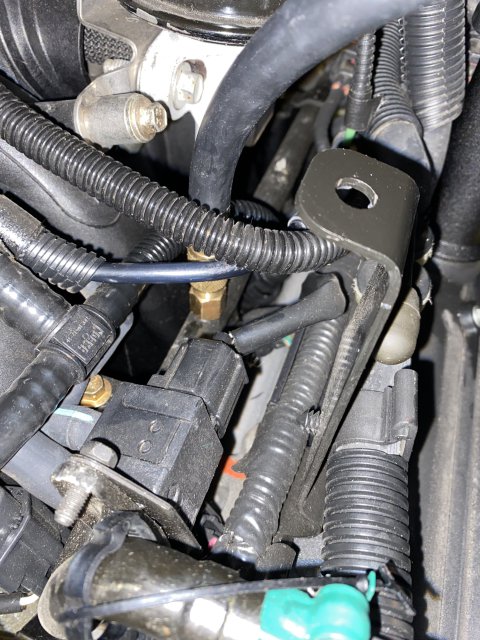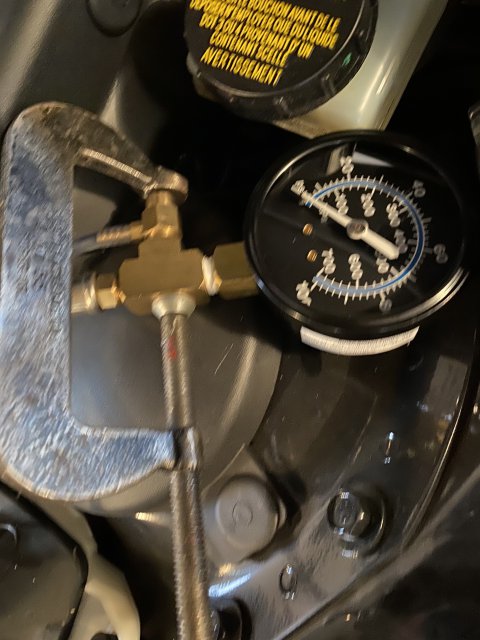T
twatson799
Click here to upgrade
- Last seen
- Joined
- Sep 19, 2021
- Thunderbird Year
- 2002
Moderator note- work to a fuel system should be performed by a certified mechanic. Use these tips at your own risk!
I have really been wracking my brain about how to get stale gasoline out of my 2002 Thunderbird. I have read about recommendations to remove the tank. This would be challenging with the exhaust under it. I have also read about removing the access cover to the fuel pump and sender unit. That too is a challenge with the tight space where it is located. Siphoning gas out of the filler neck doesn’t work due to the anti-siphon valve. I also tried to disconnect the fuel filter and connect a hose to the fuel line that I would then use to divert pumped gas into a 5 gallon can. That didn’t work either. With this setup, my plan was to trick the fuel pump inside the tank to come on and merely pump the fuel out of the tank through the fuel lines and into a 5 gallon can. That didn’t work because I couldn’t get the pump to work for more than about 2 seconds. I read that the power to the fuel pump can be interrupted if the PCM detects that the engine was not running.
Finally, a solution. The 2002 Thunderbird has a Schrader valve on the driver side fuel rail on the engine to be able to test fuel pressure just before the fuel injectors. You have to remove the plastic appearance cover on top of the engine to find the Schrader valve. It looks just like the valve on a bicycle inner tube. I bought a fuel pressure test kit and hooked it up. If you buy one or borrow one from a friend or a parts store, make sure it has a pressure relief valve and fuel drain line. That drain line is less than a 1/4 inch, but it is enough to flow gas. I put the drain line into a 5 gallon can then started up the engine and let it idle. When you press the pressure relief valve with your thumb, fuel will drain into the can. It is hard to hold your thumb on that button for a long period of time, so I used a C-clamp to hold the button. Then it was just a matter of letting the engine idle and watching the 5 gallon can fill up. It will take a while if you have a full tank of gas. The can will fill at a rate of around 5 gallons per 30 minutes of idling. I did this then shut the vehicle off to let everything cool down. I then started up the engine with an empty 5 gallon can to do the same procedure for the next 30 minutes. By then, my tank was empty.
I hope this is helpful for anyone that has this dilemma.


I have really been wracking my brain about how to get stale gasoline out of my 2002 Thunderbird. I have read about recommendations to remove the tank. This would be challenging with the exhaust under it. I have also read about removing the access cover to the fuel pump and sender unit. That too is a challenge with the tight space where it is located. Siphoning gas out of the filler neck doesn’t work due to the anti-siphon valve. I also tried to disconnect the fuel filter and connect a hose to the fuel line that I would then use to divert pumped gas into a 5 gallon can. That didn’t work either. With this setup, my plan was to trick the fuel pump inside the tank to come on and merely pump the fuel out of the tank through the fuel lines and into a 5 gallon can. That didn’t work because I couldn’t get the pump to work for more than about 2 seconds. I read that the power to the fuel pump can be interrupted if the PCM detects that the engine was not running.
Finally, a solution. The 2002 Thunderbird has a Schrader valve on the driver side fuel rail on the engine to be able to test fuel pressure just before the fuel injectors. You have to remove the plastic appearance cover on top of the engine to find the Schrader valve. It looks just like the valve on a bicycle inner tube. I bought a fuel pressure test kit and hooked it up. If you buy one or borrow one from a friend or a parts store, make sure it has a pressure relief valve and fuel drain line. That drain line is less than a 1/4 inch, but it is enough to flow gas. I put the drain line into a 5 gallon can then started up the engine and let it idle. When you press the pressure relief valve with your thumb, fuel will drain into the can. It is hard to hold your thumb on that button for a long period of time, so I used a C-clamp to hold the button. Then it was just a matter of letting the engine idle and watching the 5 gallon can fill up. It will take a while if you have a full tank of gas. The can will fill at a rate of around 5 gallons per 30 minutes of idling. I did this then shut the vehicle off to let everything cool down. I then started up the engine with an empty 5 gallon can to do the same procedure for the next 30 minutes. By then, my tank was empty.
I hope this is helpful for anyone that has this dilemma.


Last edited by a moderator:


